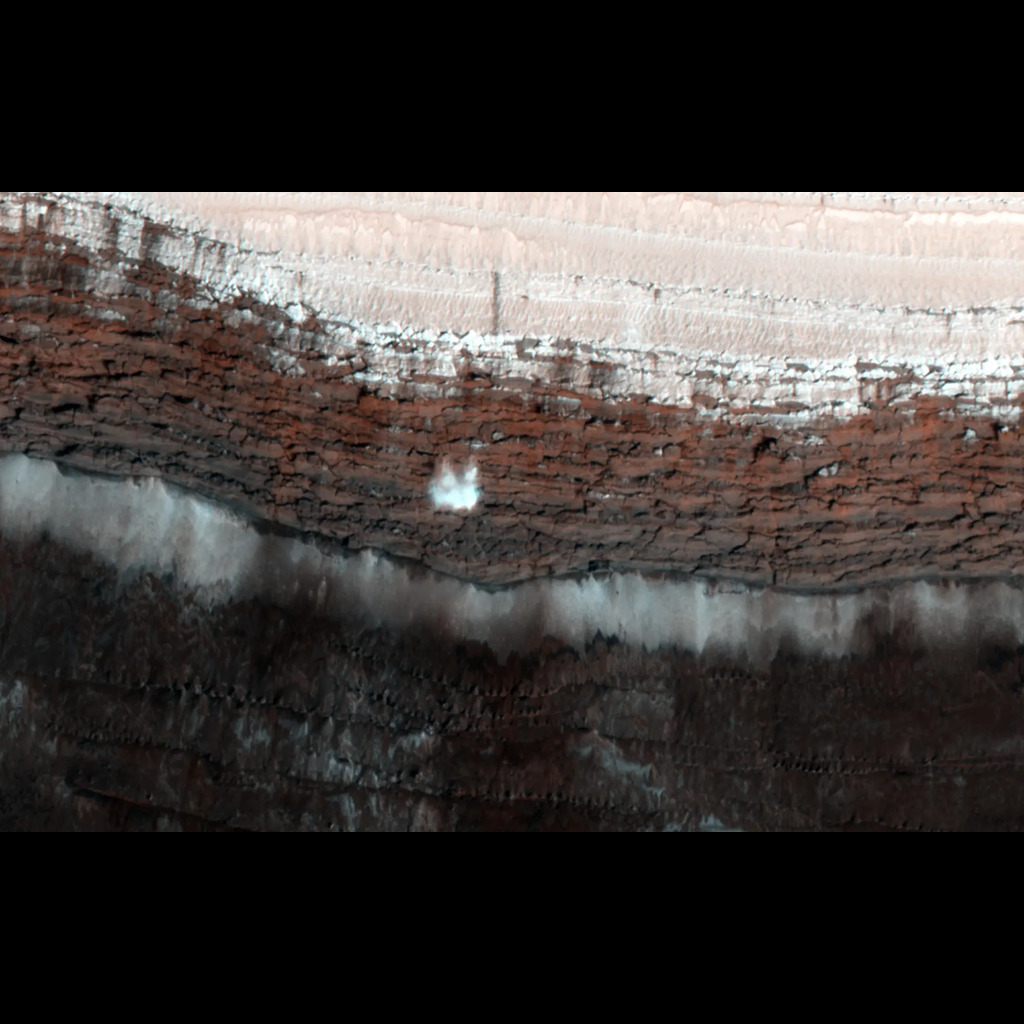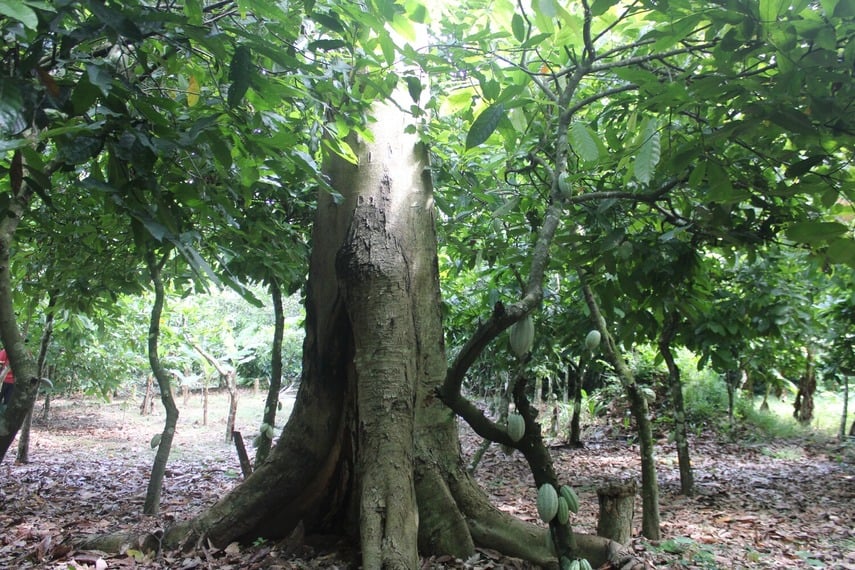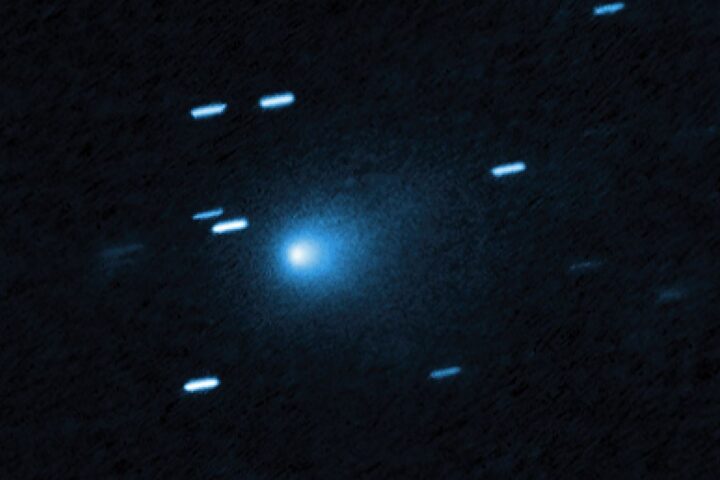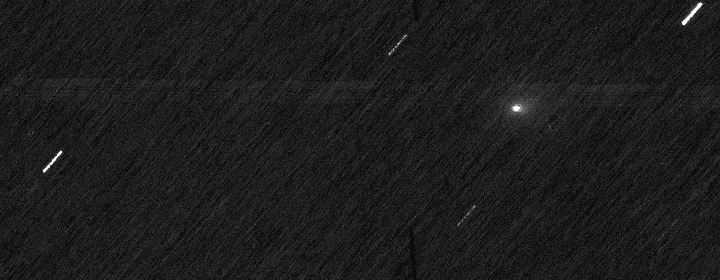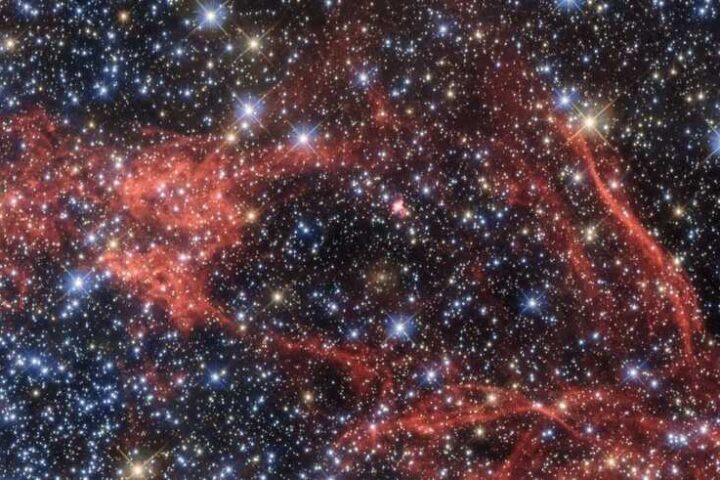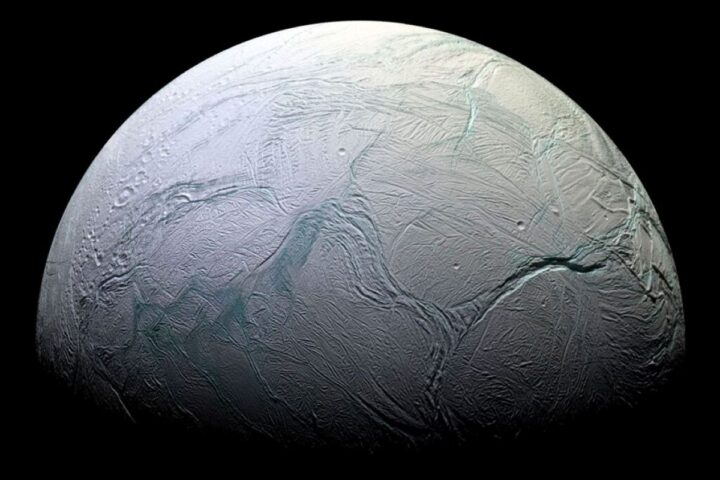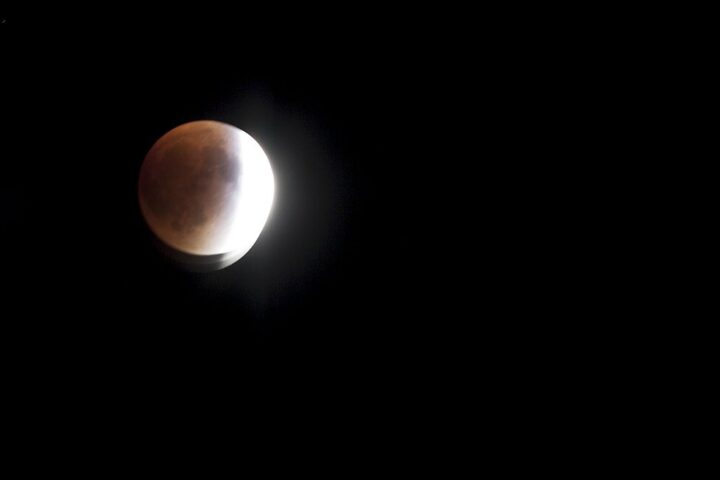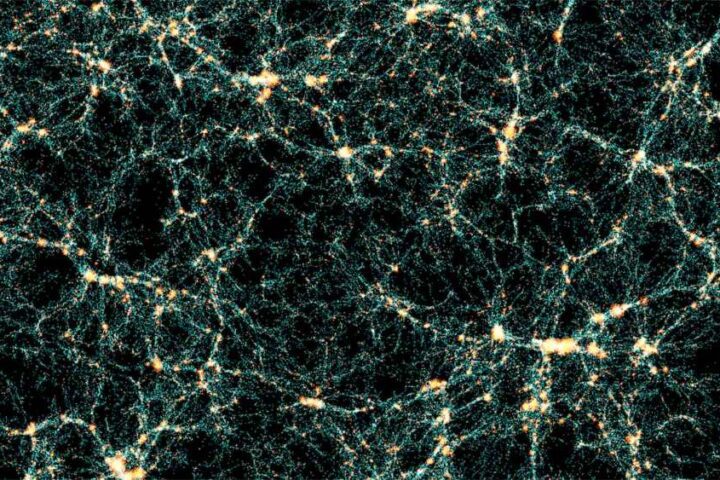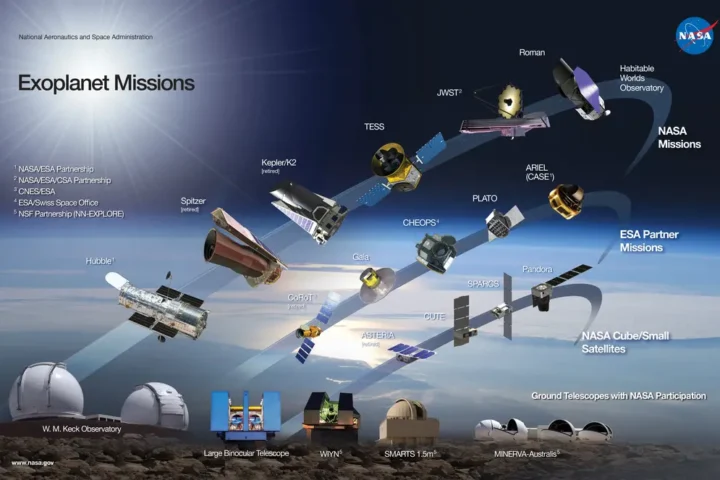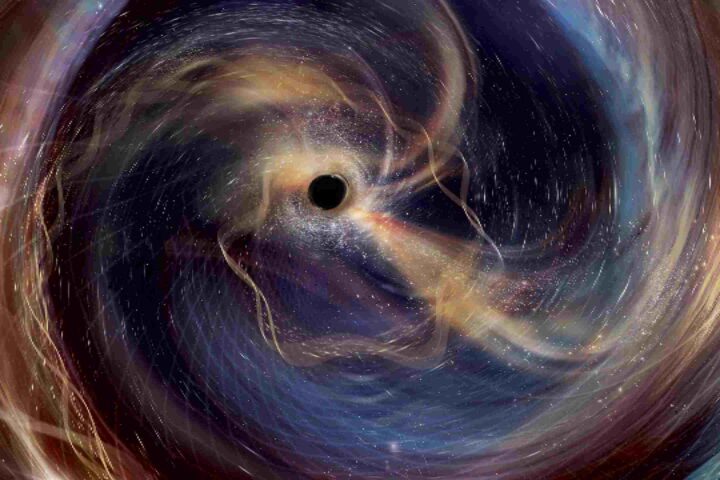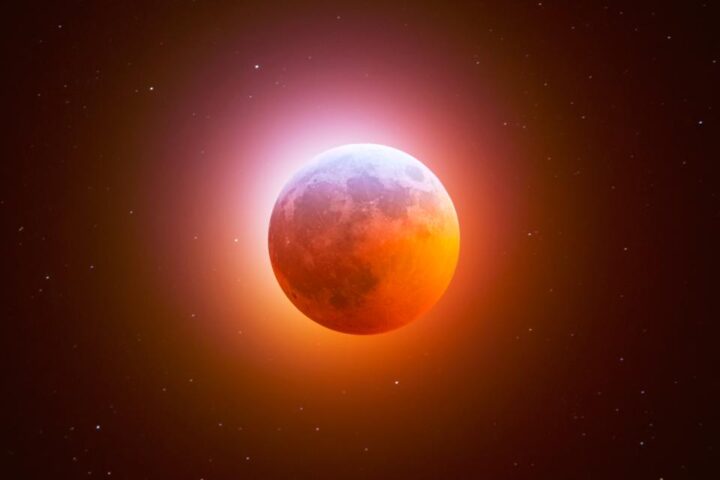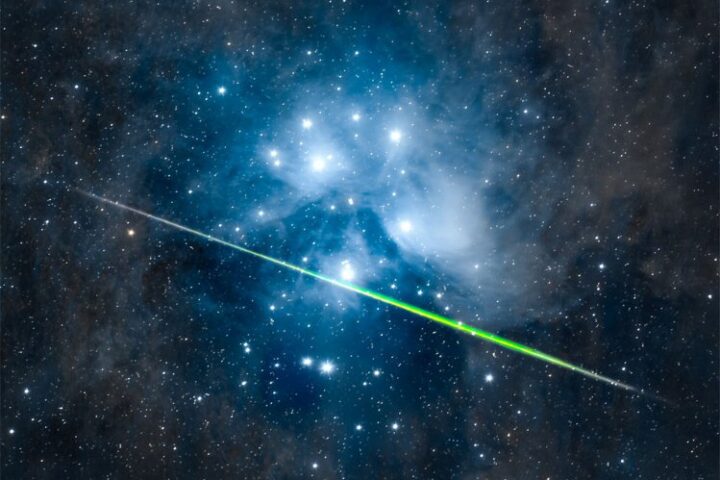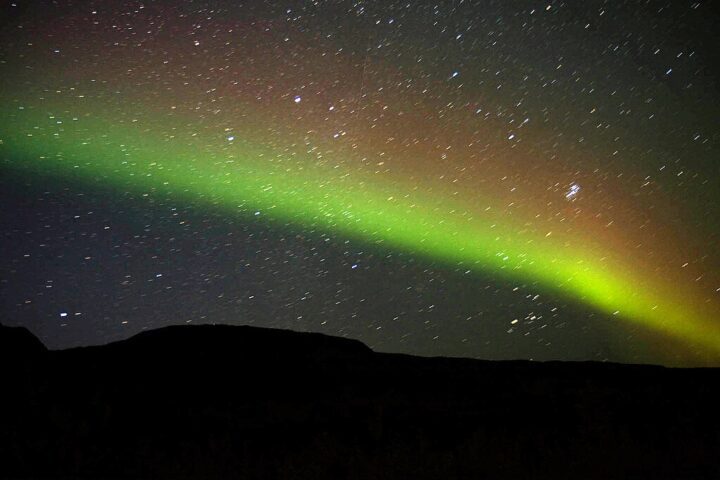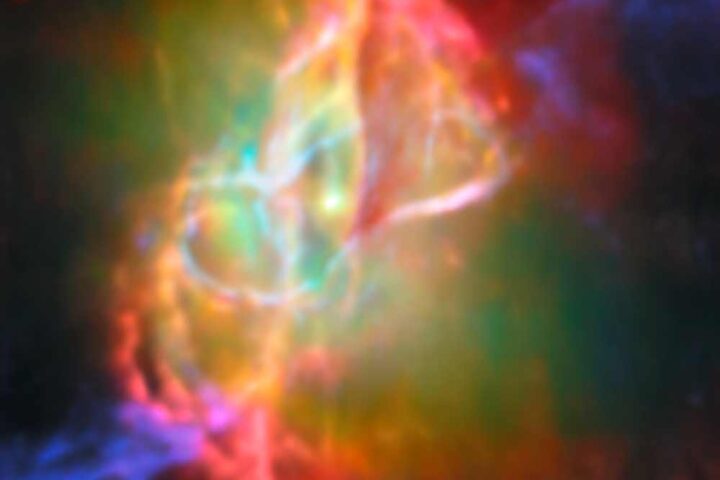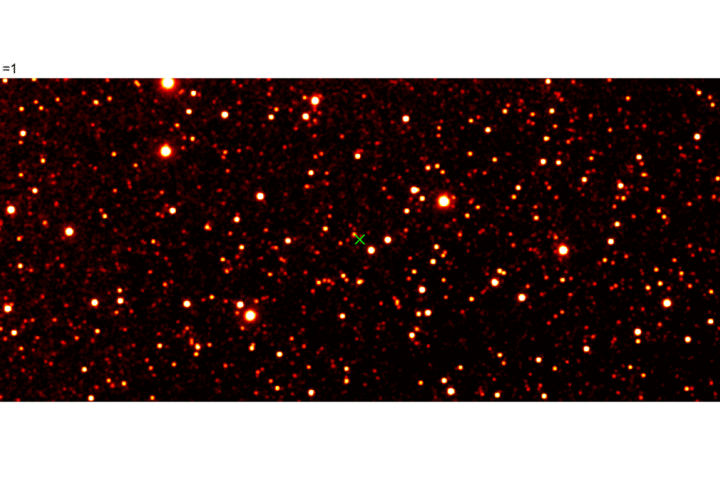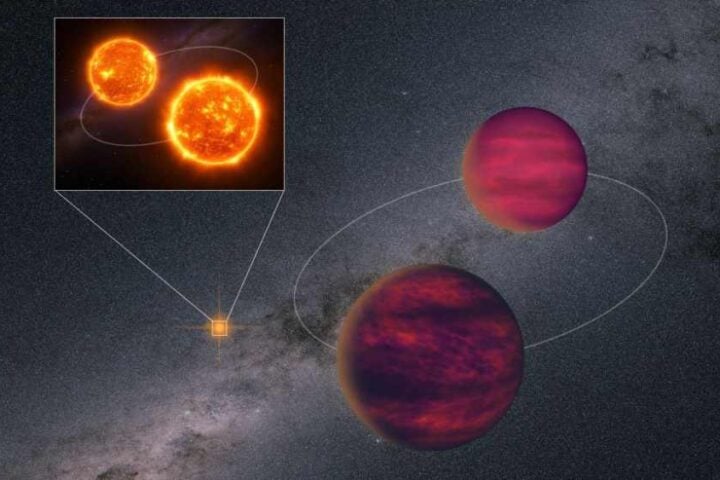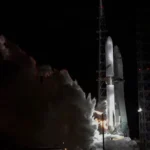The European Space Agency’s (ESA) Mars Express orbiter has captured images of carbon dioxide ice formations at Mars’ south pole, revealing complex seasonal patterns at -193°F (-125°C). These observations, made in June 2022, show an 8-meter-thick layer of carbon dioxide ice persisting year-round at the planet’s south pole.
“Springtime on Earth has lots of trickling as water ice gradually melts. But on Mars, everything happens with a bang,” says Serina Diniega, planetary surface researcher at NASA’s Jet Propulsion Laboratory.
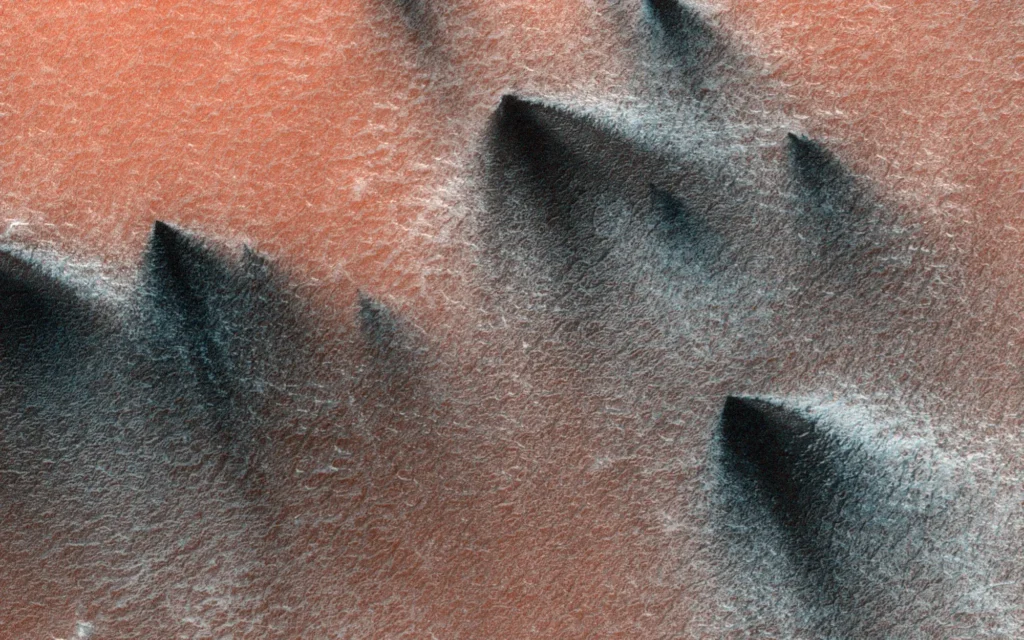
NASA/JPL-Caltech/University of Arizona
Technical Analysis of Ice Formations
The Mars Express orbiter’s High Resolution Stereo Camera (HRSC) documented the Australe Scopuli region’s ice dynamics. NASA’s Mars Reconnaissance Orbiter (MRO), using its High-Resolution Imaging Science Experiment (HiRISE) camera, complemented these observations in September 2022.
The sublimation process – ice converting directly from solid to gas – creates distinct surface patterns. Gas pockets form beneath the ice as sunlight penetrates the translucent upper layers. When pressure builds, the gas bursts through, carrying dark dust upward. Wind patterns then distribute this dust across the surface.
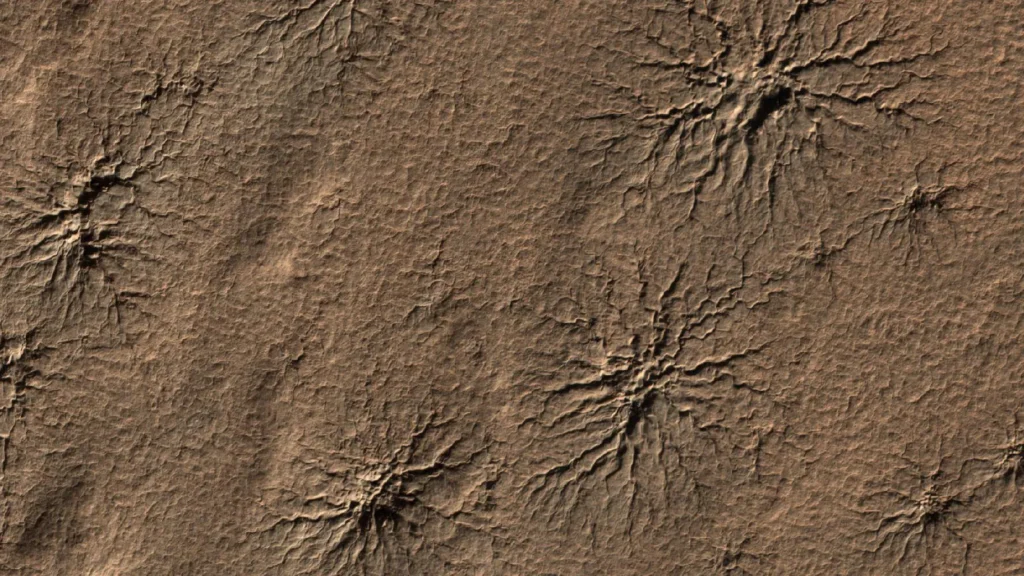
NASA/JPL-Caltech/University of Arizona
Seasonal Changes and Their Implications
Mars completed its latest orbit around the Sun on November 12, 2024, marking 687 Earth days. The planet’s thin atmosphere prevents liquid formation on its surface, resulting in ice sublimating directly into gas. This process produces specific geological features:
- Gas geysers erupting through carbon dioxide ice
- 66-foot-wide frost avalanches
- Texas-sized ice cap formations with California-length troughs
- Dune migration patterns affected by carbon dioxide frost
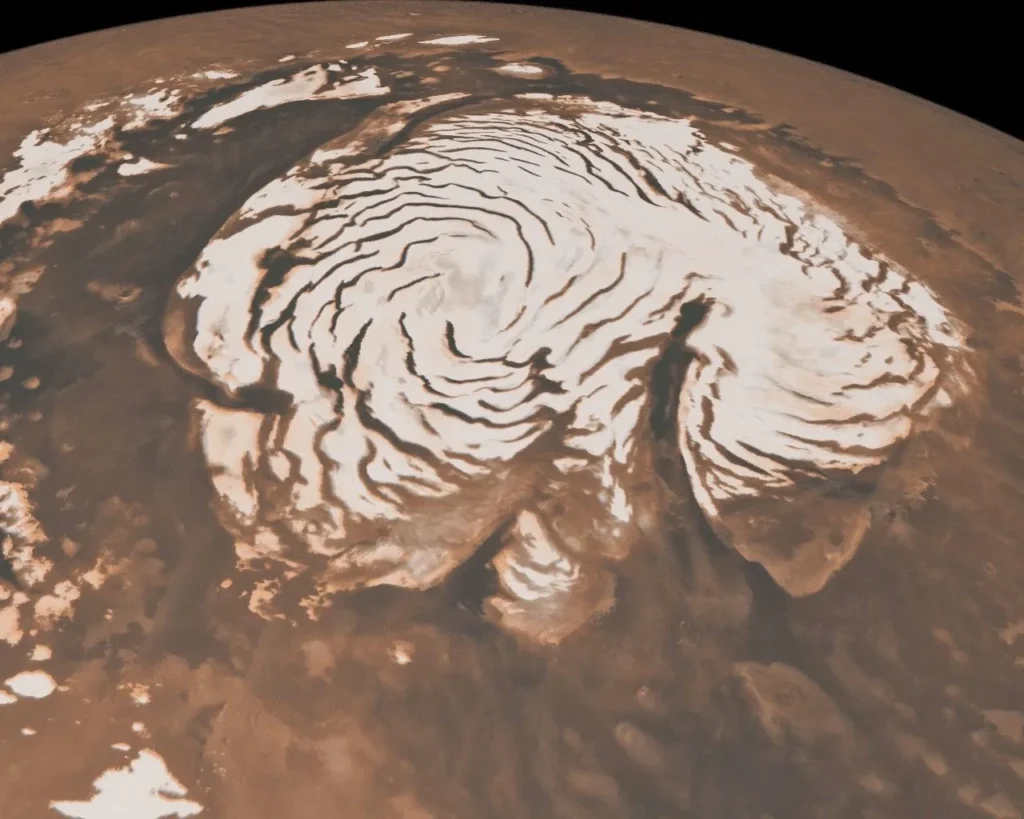
NASA/JPL-Caltech/MSSS
Similar Posts
Scientific Data Collection
The Mars Express mission, launched in 2003, has mapped the chemical composition of Mars’ atmosphere and studied its moons, Phobos and Deimos. The MRO, launched in 2005, continues monitoring seasonal changes.
Isaac Smith from York University notes the scale of polar formations: “These things are enormous. You can find similar troughs in Antarctica but nothing at this scale.”
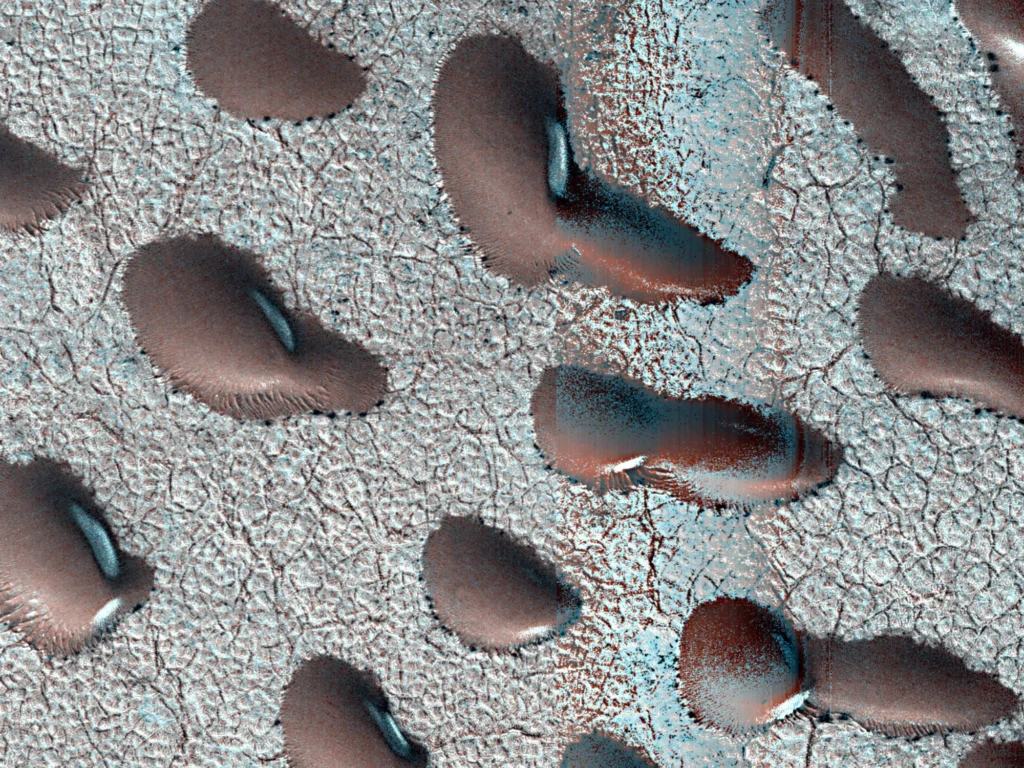
NASA/JPL-Caltech/University of Arizona
Current Research Focus
Scientists are studying the relationship between frost patterns and dune preservation. Recent research published in September details how carbon dioxide frost immobilizes polar sand dunes during winter months.
The University of Arizona operates the HiRISE camera, built by Ball Aerospace & Technologies Corp. JPL manages the Mars Reconnaissance Orbiter Project for NASA’s Science Mission Directorate.
